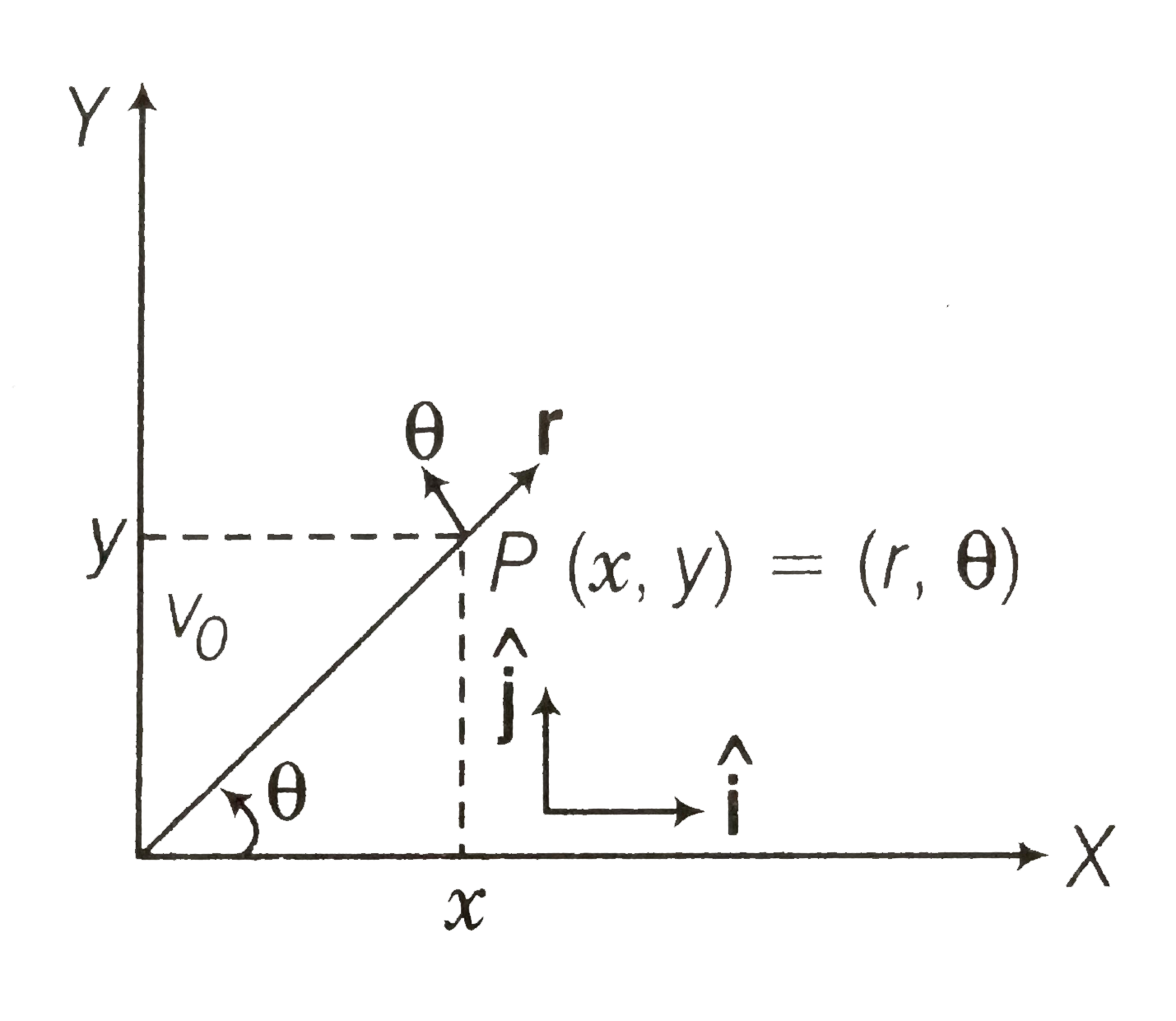Motion in two dimensions, in a plane can be studied by expressing position, velocity and acceleration as vectors in cartesian coordinates A=Axˆi+Ayˆj, where ˆi and ˆj are unit vector along x and y-directions, respectively and Ax and Ay are corresponding components of A. Motion can also be studied by expressing vectors in circular polar coordinates as A=Arˆr+Aθˆθ, where ˆr=rr=cosθˆi+sinθˆj and ˆθ=−sinθˆi+cosθˆj are unit vectors along direction in which r and θ are increasing.
(a) Express ˆi and ˆj in terms of ˆr and ˆθ.
(b) Show that both ˆr and ˆθ are unit vectors and are perpendicular to each other.
(c) Show that ddt(ˆr)=ωˆθ, where ω=dθdt and ddt(ˆθ)=−θˆr.
(d) For a particle moving along a spiral given by r=aθˆr, where a = 1 (unit), find dimensions of a .
(e) Find velocity and acceleration in polar vector representation for particle moving along spiral described in (d) above.

Step by step video & image solution for Motion in two dimensions, in a plane can be studied by expressing position, velocity and acceleration as vectors in cartesian coordinates A=A_(x)hat(i) + A_(y)hat(j), where hat(i) and hat(j) are unit vector along x and y-directions, respectively and A_(x) and A_(y) are corresponding components of A. Motion can also be studied by expressing vectors in circular polar coordinates as A= A_(r)hat(r) + A_(theta) hat(theta), where hat(r)=(r)/(r)=cos theta hat(i)+sin theta hat (j) and hat(theta)=-sin theta hat(i) + cos theta hat (j) are unit vectors along direction in which r and theta are increasing. (a) Express hat(i) and hat (j) in terms of hat(r) and hat (theta). (b) Show that both hat(r) and hat(theta) are unit vectors and are perpendicular to each other. (c) Show that (d)/(dt)(hat(r))= omega hat(theta), where omega=(d theta)/(dt) and (d)/(dt) (hat(theta))=-thetahat(r). (d) For a particle moving along a spiral given by r=a theta hat(r), where a = 1 (unit), find dimensions of a . (e) Find velocity and acceleration in polar vector representation for particle moving along spiral described in (d) above. by Physics experts to help you in doubts & scoring excellent marks in Class 11 exams.
Topper's Solved these Questions
- BOOK - SL ARORACHAPTER - Motion in a PlaneEXERCISE - Excercise397videos
Motion in a Plane
- BOOK - SL ARORACHAPTER - Motion in a PlaneEXERCISE - Excercise397videos
Motion in a Plane
- BOOK - SL ARORACHAPTER - MECHANICSEXERCISE - Exercise341videos
MECHANICS
- BOOK - SL ARORACHAPTER - MOTION IN ONE DIMENSIONEXERCISE - problems for self practice66videos
MOTION IN ONE DIMENSION
Similar Questions
Motion in two dimensions, in a plane can be studied by expressing position, velocity and acceleration as vectors in cartesian coordinates A=Axˆi+Ayˆj, where ˆi and ˆj are unit vector along x and y-directions, respectively and Ax and Ay are corresponding components of A. Motion can also be studied by expressing vectors in circular polar coordinates as A=Arˆr+Aθˆθ, where ˆr=rr=cosθˆi+sinθˆj and ˆθ=−sinθˆi+cosθˆj are unit vectors along direction in which r and θ are increasing.
(a) Express ˆi and ˆj in terms of ˆr and ˆθ.
(b) Show that both ˆr and ˆθ are unit vectors and are perpendicular to each other.
(c) Show that ddt(ˆr)=ωˆθ, where ω=dθdt and ddt(ˆθ)=−θˆr.
(d) For a particle moving along a spiral given by r=aθˆr, where a = 1 (unit), find dimensions of a .
(e) Find velocity and acceleration in polar vector representation for particle moving along spiral described in (d) above.
 View Solution
View SolutionThe vector (ˆi+ˆj) is a unit vector.
View Solution
Knowledge Check
- Question 1 - Select One
The angle which the vector →A=2ˆi+3ˆj makes with the y-axis, where ˆi and ˆj are unit vectors along x- and y-axis, respectively, is
Acos−1(3/5)Bcos−1(2/3)Ctan^(-1)(2//3)Dsin−1(2/3) - Question 2 - Select One
The unit vector along ˆi+ˆj is
AˆkBˆi+ˆjCˆi+ˆj√2Dˆi+ˆj2 - Question 3 - Select One
If ˆi,ˆj,ˆk are the unit vectors and mutually perpendicular, then [ˆiˆjˆk]=
A0B−1C1D2
If ˆiandˆj are unit vectors along X- and Y-axis respectively, then what is the magnitude and direction of ˆi+ˆjandˆi−ˆj ?
View SolutionThe angle θ between the vector →p=ˆi+ˆj+ˆk and unit vector along X-axis is
View SolutionGiven, two vectors are ˆi−ˆjandˆi+2ˆj, the unit vector coplanar with the two vectors and perpendicular to first is
View SolutionIf ˆi,ˆjandˆk are unit vectors along x,y and z-axis respectively, the angle θ between the vector ˆi+ˆj+ˆk and vectorˆj is given by
View SolutionVectors which is perpendicular to (acosθˆi+bsinθˆj) is
View Solution

